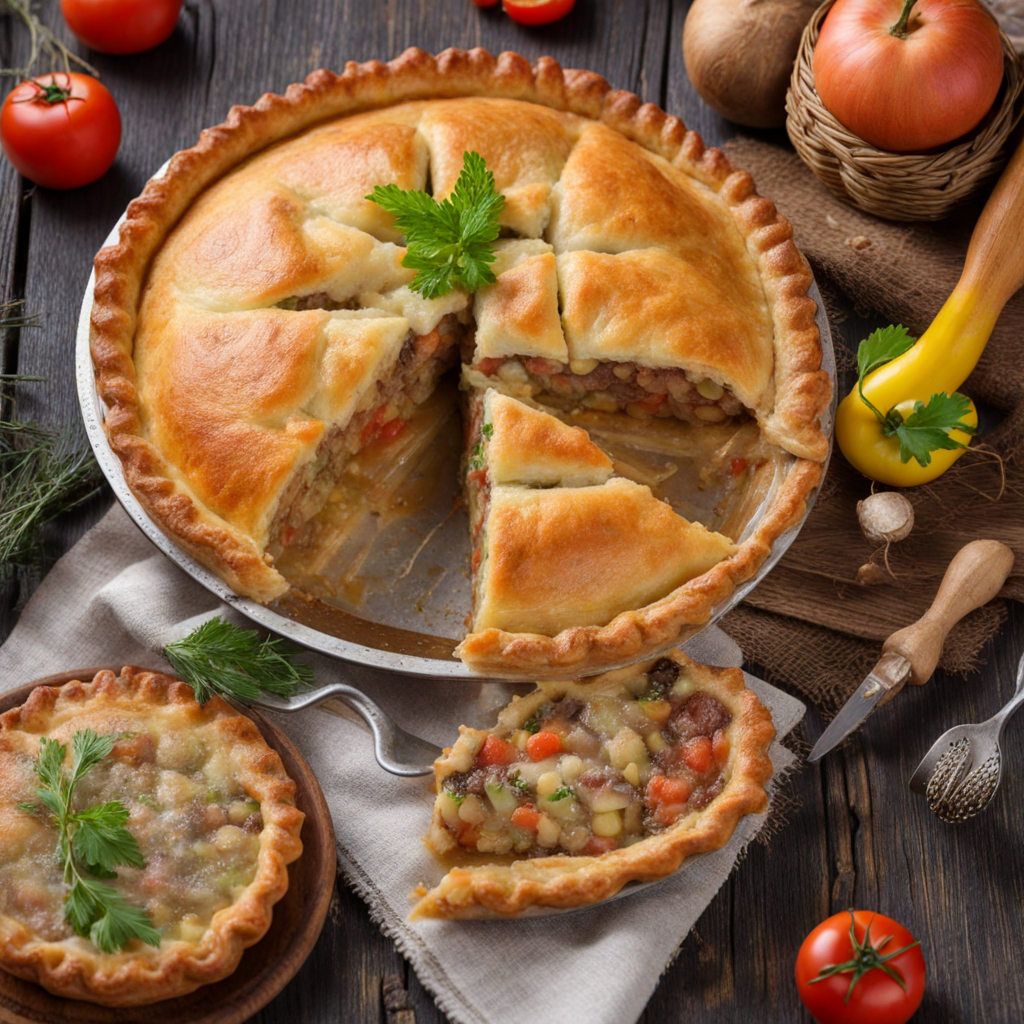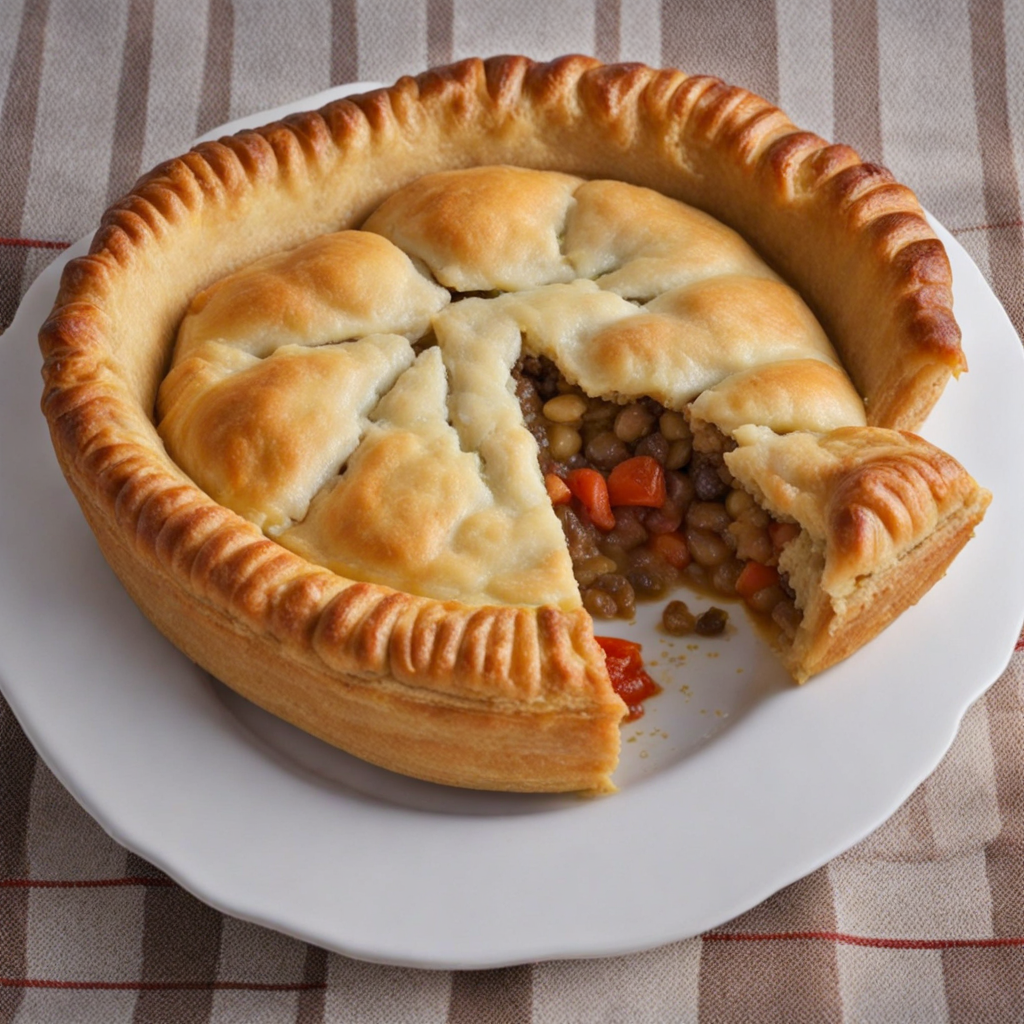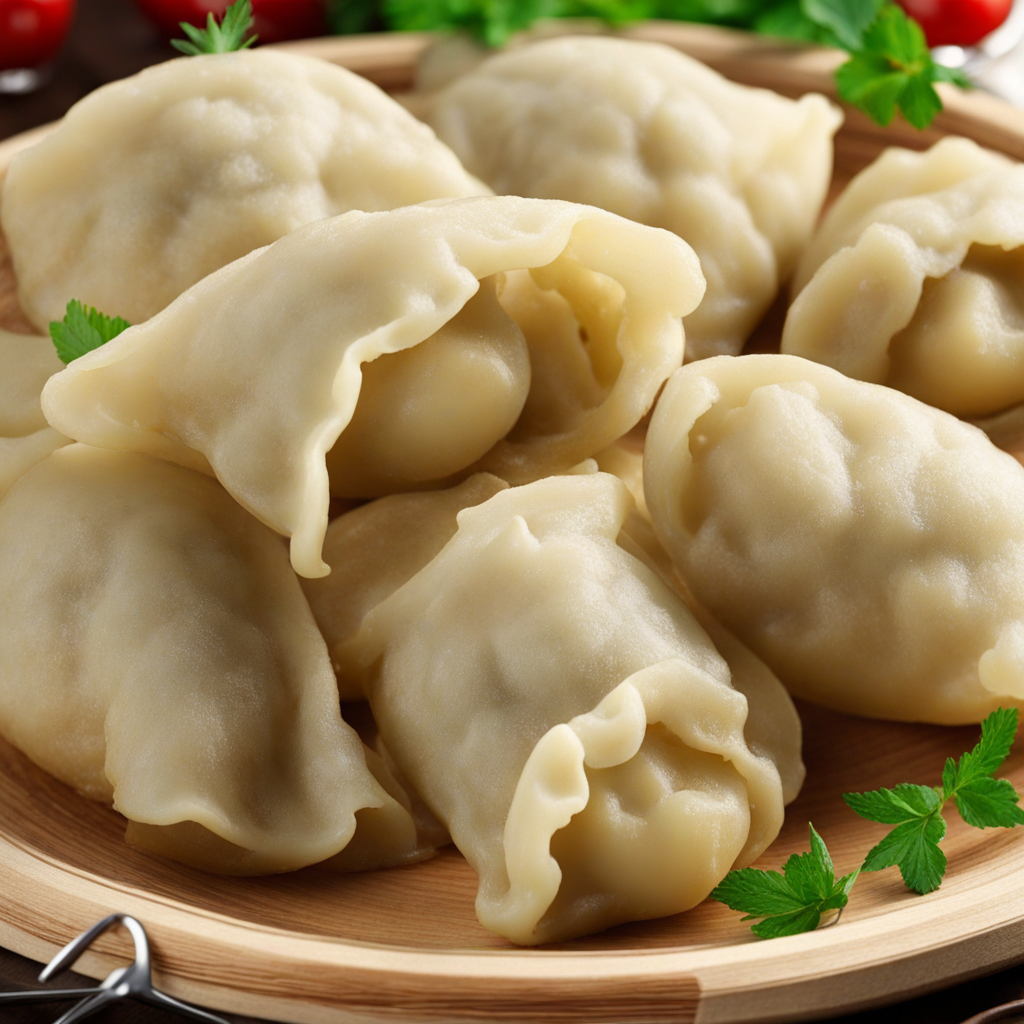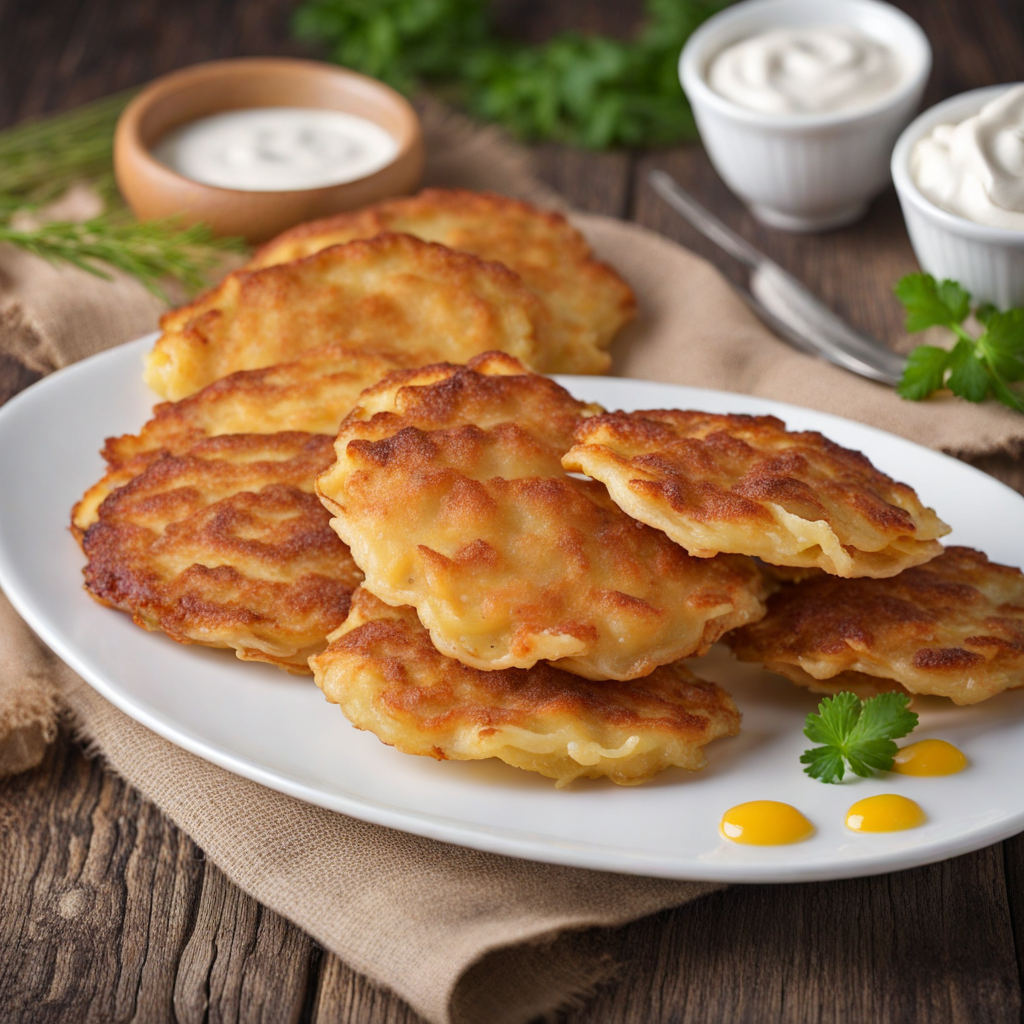Pyrih
Pyrih is a traditional Ukrainian dish that beckons food enthusiasts with its delightful combination of flavors and textures. This savory pastry is typically made with a flaky, golden crust that encases a variety of fillings, ranging from hearty meats and vegetables to sweet fruit and berries. The dough is often enriched with sour cream or eggs, giving it a tender, buttery consistency that melts in your mouth. When baked, the crust develops a beautiful, crisp exterior that contrasts perfectly with the moist filling inside, creating a satisfying bite that is both comforting and indulgent. One of the most popular variations of Pyrih features a filling of seasoned ground meat, such as beef or pork, combined with onions and spices that impart a warm, aromatic essence. This savory version is often served warm, making it an ideal dish for gatherings and family meals. Alternatively, sweet Pyrih can be made with fillings like cherries, apples, or poppy seeds, offering a delightful balance of sweetness and tanginess. These sweet treats are typically enjoyed as a dessert or for breakfast, showcasing the versatility of this beloved pastry. The experience of enjoying Pyrih goes beyond just taste; it is also a celebration of Ukrainian culture and tradition. Often prepared for special occasions and family gatherings, this dish brings people together, evoking a sense of nostalgia and comfort. Whether you are savoring a slice at a festive feast or enjoying a quiet moment with a cup of tea, Pyrih is sure to leave a lasting impression, inviting you to explore the rich culinary heritage of Ukraine.
How It Became This Dish
The History of Пиріг: A Culinary Treasure of Ukraine #### Origins The Пиріг, often translated as "pie" in English, has deep roots in Ukrainian culinary tradition, serving as a symbol of home, comfort, and celebration. The word itself derives from the Old Slavic term "pir," which means "feast" or "celebration." This etymology hints at the пиріг's role in Ukrainian culture, where food is intimately linked with community and festivity. The earliest forms of пиріг can be traced back to the agricultural societies of Eastern Europe, where peasants relied on local crops for sustenance. As bread was a staple of the diet, it naturally evolved into various forms, leading to the creation of pies filled with seasonal fruits, vegetables, and meats. The use of dough to encase fillings served not only to preserve the ingredients but also to create a dish that could be easily transported and shared. #### Cultural Significance In Ukraine, пиріг transcends mere sustenance; it embodies a rich tapestry of social and cultural values. Traditionally, пироги (the plural of пиріг) are prepared for family gatherings, religious holidays, and significant life events such as weddings, christenings, and funerals. They serve as a unifying element, inviting family and friends to come together and partake in a shared experience. Each region in Ukraine boasts its own variations of пиріг, reflecting local ingredients and culinary techniques. For instance, in the western part of the country, you might find пиріг filled with potato, cabbage, or cheese, while in the east, meat and mushroom fillings are more prevalent. These regional specialties highlight the diversity within Ukrainian cuisine, shaped by geography, climate, and cultural influences. Moreover, пиріг holds a significant place in Ukrainian folklore and tradition. It is often featured in songs, folk tales, and even proverbs, symbolizing hospitality and abundance. One popular saying goes, "A пиріг in the house is a guest at the table," emphasizing the role of this dish in welcoming others. During significant holidays like Christmas and Easter, special variations of пиріг are prepared, reinforcing its status as a dish of celebration and joy. #### Development Over Time The evolution of пиріг reflects broader social and economic changes in Ukraine. During the 19th century, as Ukraine experienced a wave of nationalism, traditional foods like пиріг became symbols of cultural identity. The revival of interest in folklore and folk traditions led to a renewed appreciation for local cuisines, and пиріг was often seen as a representation of Ukrainian heritage. The industrialization of agriculture and the rise of the Soviet regime in the early 20th century introduced new challenges. The centralization of food production and the collectivization of farms changed how food was sourced and prepared. While many traditional recipes were lost or altered, the пиріг managed to survive, adapting to the constraints of the time. It became a practical dish, often filled with whatever ingredients were readily available, including grains, vegetables, and foraged foods. As Ukraine gained independence in the 1990s, there was a resurgence of interest in traditional foods, including пиріг. Chefs and home cooks alike began to explore and celebrate their culinary heritage, leading to a revival of old family recipes and regional variations. Contemporary Ukrainian cuisine has embraced the пиріг with creativity, introducing innovative fillings and modern cooking techniques while still honoring traditional methods. In urban areas, пиріги have found their way into cafes and restaurants, often served alongside a variety of other traditional dishes. The street food scene in cities like Kyiv and Lviv showcases пиріг as a popular snack, filled with everything from sweet cherry to savory meat fillings. This versatility has allowed пиріг to remain relevant in a fast-paced modern society while retaining its cultural significance. #### Modern Interpretations Today, the пиріг continues to be a beloved dish in Ukrainian households and restaurants. Home cooks take pride in their family recipes, often passed down through generations, while chefs experiment with flavors and presentations, offering gourmet versions of this traditional dish. The rise of food tourism in Ukraine has also contributed to the popularity of пиріг, with travelers eager to sample authentic local cuisine. The global Ukrainian diaspora has further spread the love for пиріг beyond its borders. Ukrainian communities around the world celebrate their heritage through food, often hosting cultural festivals that feature traditional dishes, including пиріг. The dish serves as a culinary ambassador, introducing people to the richness of Ukrainian culture and the stories behind each filling. #### Conclusion The history of пиріг is a testament to the resilience of Ukrainian culinary traditions. From its humble origins as a peasant dish to its status as a symbol of national identity, пиріг reflects the heart and soul of Ukraine. It is more than just a pie; it is a vessel of cultural expression, a reminder of community, and a celebration of the land and its bounty. As Ukraine continues to navigate the complexities of the modern world, пиріг remains a cherished part of its cultural landscape. Whether enjoyed at a family gathering, a festive occasion, or as a street food delight, this dish encapsulates the essence of Ukrainian hospitality and heritage. In every bite, one can taste the history, love, and tradition that have shaped this enduring culinary treasure.
You may like
Discover local flavors from Ukraine







